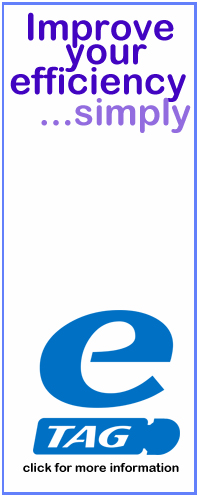A skim read of AM and other dealer-focused trade magazines in recent months might fool you into thinking that UK car dealers are operating in a buoyant market in which they can do no wrong. New car sales are set to exceed original 2013’s sales forecast by more than 200,000 units, hitting 2.25 million registrations by year end, up from 2.04m in 2012. It gets better, the National Franchised Dealers Association (NFDA) recently reported: “the market will remain strong in the New Year as consumer confidence continues to grow as the UK economy continues to recover.”
With positive numbers emanating from most major groups and city analysts indicating that many publicly listed groups like Vertu Motors are under-valued; it seems likely that these groups will have more shareholder funds to invest in further acquisitions in 2014. Yes – the large chains are going to continue to expand, the consolidation trend may even accelerate as we slip slowly out of the deepest recession since the 1930s.
So why worry I hear you say? But underneath the positive growth charts there remain deeper concerns which have been brought about by changing customer behaviour. Dealers are not immune from the paroxysms that have already hit high street retailers up and down the land. You guessed it: we are all going online to do our research and plan our big ticket purchases – new and used cars included.
But what should a dealer be spending their hard-earned money on to ensure they are seen online and remain visible in their core catchment area - capturing the interested buyer early and making sure they buy from them rather than the one down the road or out of area? One area where investment is badly needed is digital marketing and thankfully there are lots of suppliers with expertise in our market that can help you including Razsor and Greenlight.
But if you are investing more heavily in online marketing, something has to give now most of us are operating close to industry average return on sale margins of 1.3%. One of the areas that they might choose to hold off on is that dealership refit which your manufacturer may be asking you to fork out for.
A recent paper from automotive analyst ICDP encourages UK dealers to push back on expensive refit requests in favour of getting some more fundamental issues right – namely customer service: http://www.am-online.com/news/2013/12/18/car-dealers-the-property-timebomb-/34117/
Deeper reading of ICDP’s research findings uncovers another potential point of friction between manufacturers and franchisees: namely their attempts to micro-manage franchises in the area of customer service through enforcing top-down standards, bonus structures and CSI scores. ICDP observed that these systems are actually part of the problem rather than the solution. Their research from talking to customers that have recently bought new cars this year reveals a very different picture from published CSI scores. One part of the problem is the heavily bonus-orientated dealership sales force which sets up a dynamic which encourages individual success over team work and joined up thinking. Handovers between different people in UK dealerships can be poor or non-existent. Staff turnover runs high because the best salesmen go where the best bonus is on offer and dealerships tend to spend less on staff training as a ‘survival of the fittest culture’ starts to pervade. When compared with the US dealerships, too many UK dealers still serve up a pretty shoddy and disjointed customer experience as a result.
If the Apple Genius Bar customer service experience is the new retail customer service benchmark then the first thing that needs to happen in dealerships is to increase base salaries as a proportion of overall packages - decreasing the amount salesmen have to sell day in day out to take home a decent wage. I know this sounds potentially expensive but we would argue it’s better to spend more money, time and effort on getting your most important and influential asset right – your people – than on flashy interior design refits. This is clearly only possibly if you have utter confidence in the strength of the brand you are selling and the sales potential of the locality you represent. If these fundamentals are in place then these sorts of changes can be made. Manufacturers themselves can help by giving their dealers the confidence they need to make these sorts of changes for the good of the business longer term.
Successful dealerships like the Arbury Motor Group (profiled in AM this month) seem to marry a hard-edged focus on the numbers with strong people skills, even fostering a family-business mentality that looks after its people. We’ve met several dealerships with enlightened recruitment policies. Some like CJ Automotive http://www.cjautomotive.co.uk are hiring based on attitude. Previous automotive experience is not critical in ‘front of house’ roles as long as they are able to look after the customer and have a can-do attitude.
From people to place - surely one of the key things about a dealership is its locality i.e. its proximity to a large enough catchment of potential car buyers? So I would argue that dealerships need to work harder to market themselves as a company that is embedded in the local community.
Clever digital marketing techniques, like those espoused by the likes of Razsor and Greenlight, offer the potential for dealers based in, say, Hemel Hempstead to dominate the searches on the brands and models they sell made by online enquirers within 25 miles of Hemel. But once you have their attention, you need to get engagement. We’ve talked before about the need to offer appealing online content in previous ImproveMyDealership blogs so we won’t reiterate this here. Whatever the idea to pull the customers in, the objective must be, to be considered as a ‘destination’ to experience the prospective car earlier in a buying cycle which generally begins online today.
There appear to be other common routes to financial success. A higher focus on F&I is definitely part of this picture. Financing, insurance and trade-in value options and calculators all must be offered on your website. Products such as PCPs have worked particularly well for many dealers in recent years, partly because prices of used cars (especially those 2-3 years old reaching the end of contract periods) have generally gone up and stayed up. In this way dealers are also able to offer a wider range of options to visitors to their dealerships. Other large chains have diversified into higher margin prestige cars and found growth that way.
Yet most dealers do not appear to have fully arrested the industry-wide decline in service revenues: http://www.motortrader.com/latest-news/dealers-urged-reverse-absorption-decline/, so that today even the most well run dealerships have overhead absorption rates settling at 60% which is a full 20% below ASE’s benchmark percentage. To top this, new car sales margins remain razor thin. Arresting the after sales decline will surely be on the 2014 To-Do lists of many dealer principals.
So our 2014 Top 6 Priorities for Dealer Principals are:
1. Push back on manufacturers’ premises refresh demands
2. Consider re-balancing remuneration levels more in favour of salary if you detect your customer experience is disjointed and an everyman for himself culture is pervading the sales floor, invest in training and process to improve the customer experience
3. Invest in digital marketing to engage with prospective car buyers before they arrive at your dealership
4. Look closer at F&I sales and provide more options and flexibility to customers – offering them information and calculators online so they can educate themselves a little before coming to branch
5. Develop a strategy for building your profile locally – both online and on the ground. More events, test drives, online videos, social media comms activity with lots of customer feedback will all help drive up the positive profile of your dealership
6. Consider new ways of packaging and marketing your after-sales offers to new customers to improve those absorption levels. Service Plans are an obvious starting point but there are other ways you can personalise your service. Personalisation is a word we’ll be hearing a lot more of in 2014…..
Do you have any other priorities for 2014 to halt shrinking margins and falling overhead absorption levels? Do let us know.


 RSS Feed
RSS Feed




